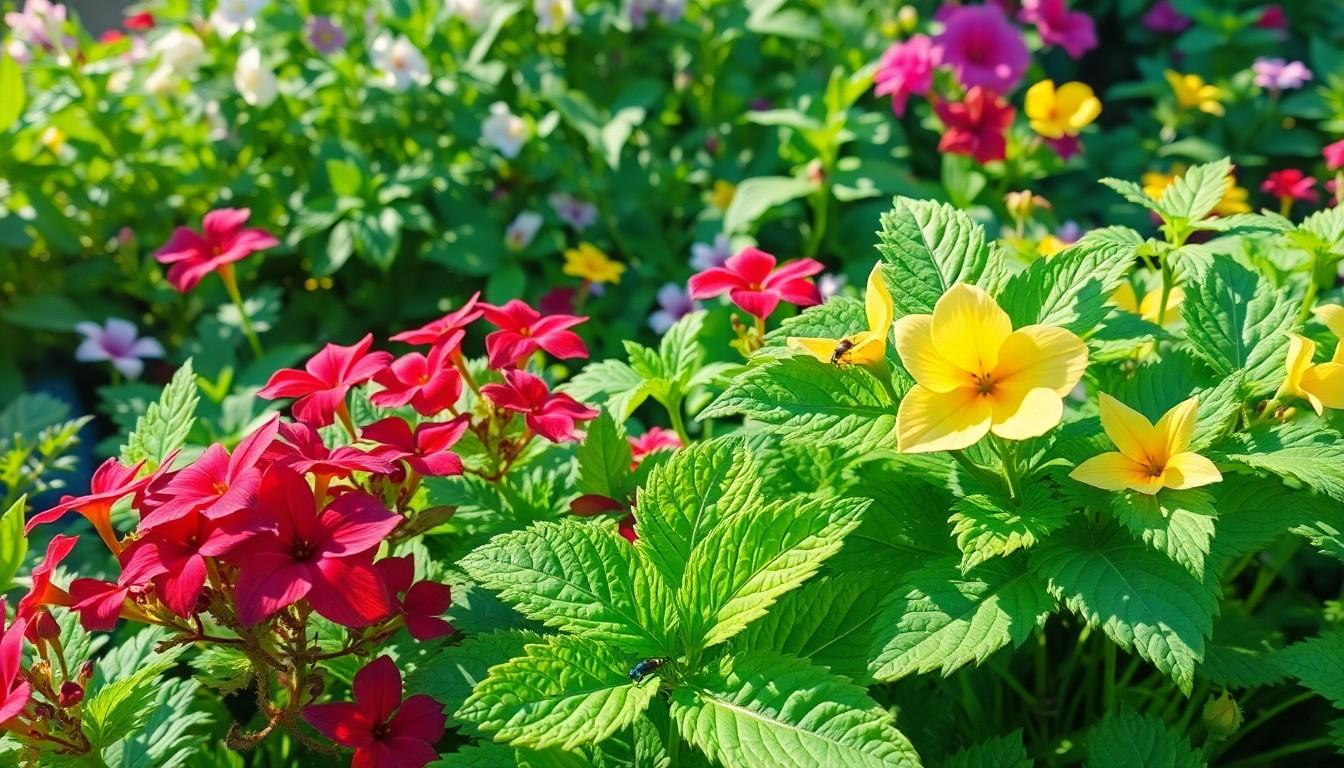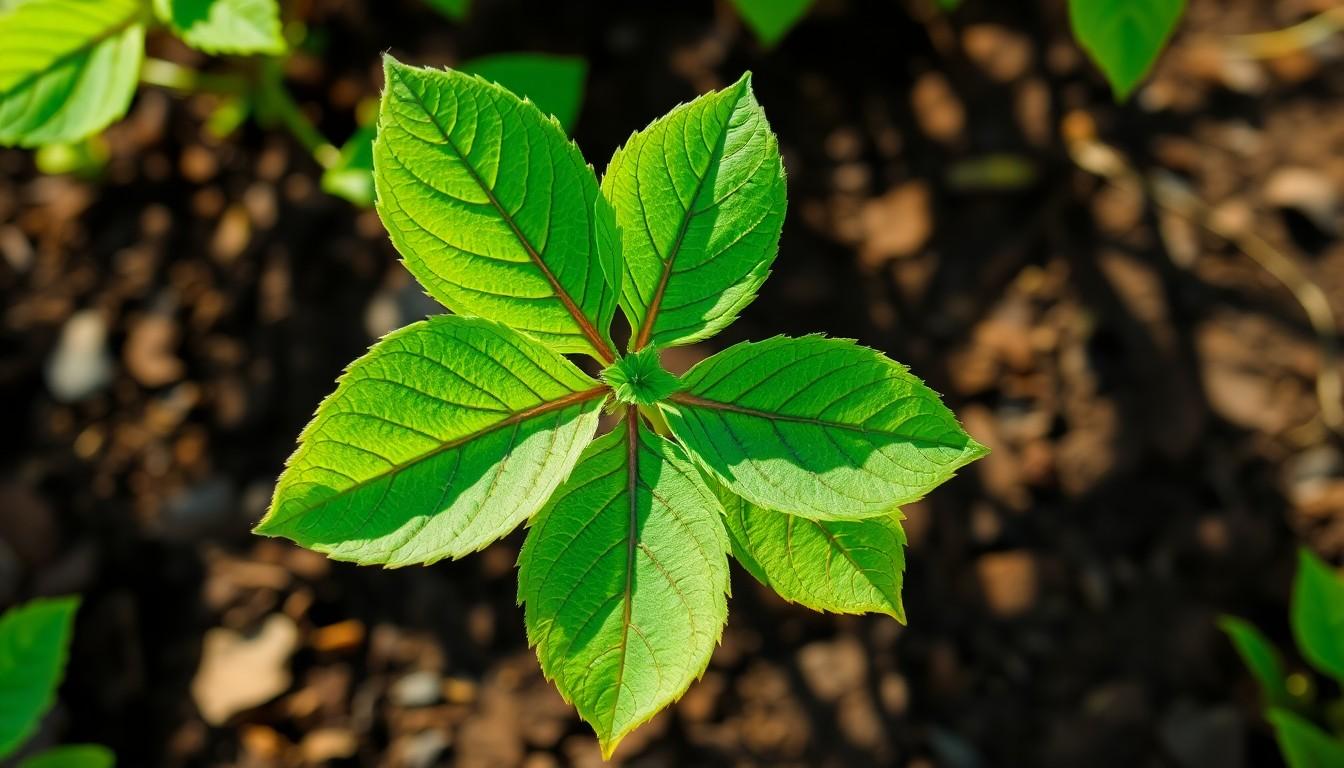Ever found yourself wandering through a garden, scratching your head at a plant with five leaves? You’re not alone. These leafy wonders often leave people puzzled, wondering if they’ve stumbled upon a rare species or just another green imposter. Identifying five-leaf plants can feel like a botanical game of hide and seek, but it doesn’t have to be a mystery!
With a little knowledge and a keen eye, anyone can master the art of five leaf plant identification. Whether you’re a seasoned gardener or a curious nature lover, understanding these plants can add a new layer of appreciation to your outdoor adventures. So grab your magnifying glass and get ready to impress your friends with your newfound plant prowess. Who knew learning about foliage could be this fun?
Overview of Five Leaf Plants
Five leaf plants often stimulate curiosity in gardeners and nature enthusiasts. Common examples include Poison Ivy, Virginia Creeper, and Arabian Coffee. Each of these plants displays distinct traits, facilitating identification.
Poison Ivy typically features three leaflets, but variations can present with five. It grows widely across North America and is known for causing skin irritation. In contrast, Virginia Creeper showcases five leaflets that form a palmate shape. Climbing structures, it can reach considerable heights and produces small blue berries.
Arabian Coffee, characterized by its glossy leaves, also adopts the five-leaf structure. It thrives in tropical climates and plays a significant role in coffee production. Observing seasonal changes in foliage aids in recognizing these plants, particularly as their colors shift.
Growing conditions frequently influence leaf morphology. Adequate sunlight and moisture lead to fuller foliage, while stress may cause unusual leaf configurations. Understanding these variations supports accurate plant identification.
Leaf arrangement differs among species, making it essential to consider not just the number of leaves but also their placement. Some plants may display clusters of five leaves, while others may alternately arrange them. Examining the leaf shape, margin, and texture enhances identification skills.
Recognizing five leaf plants enriches one’s understanding of local biodiversity. Engaging in this botanical exploration promotes a deeper connection to nature, fostering appreciation for each species.
Why Identification Matters

Identifying five leaf plants holds significant value in various contexts. Mastery of plant identification enhances both gardening techniques and conservation efforts.
Importance in Horticulture
Horticulture benefits greatly from the precise identification of five leaf plants. Familiarity with these species aids in selecting appropriate plants for gardens and landscapes. Gardeners can enhance biodiversity and ecosystem health by incorporating native five leaf varieties. Knowledge of specific growth conditions leads to better care practices tailored to the needs of each plant. Understanding plant interactions promotes sustainable gardening techniques that support local flora and fauna.
Environmental Significance
Five leaf plants contribute crucial ecological roles in their environments. Many serve as vital habitats for insects and wildlife, promoting biodiversity. Recognizing these species helps in monitoring plant health and detecting environmental changes. Identifying invasive five leaf plants allows for effective management strategies that protect native ecosystems. By preserving these plants, individuals support the overall health of their local environment.
Common Types of Five Leaf Plants
Identifying five leaf plants involves recognizing their unique characteristics. Several species stand out due to their distinctive features.
Plant A: Description and Features
Virginia Creeper offers five palmate leaves that can sometimes resemble poison ivy. Typically, these leaves cluster in groups of five, creating a vibrant green appearance. During the fall, foliage shifts to brilliant red or purple hues. This climbing vine often reaches heights of over 30 feet and produces small blue berries, attracting birds. Its adaptability to various environments enhances its presence in gardens and wild landscapes.
Plant B: Description and Features
Poison Ivy may surprise many with its ability to display five leaves, although it is most recognized for three. Leaflets have smooth edges and glossy surfaces, which can cause confusion during identification. This plant thrives in diverse growing conditions, often found in wooded areas and along roadsides. Recognizing its distinctive shape and how it responds seasonally is crucial. Warnings against interaction are necessary due to the skin irritation caused by its oil, urushiol.
Plant C: Description and Features
Arabian Coffee is notable for its lush, dark green leaves and significant role in coffee production. Leaf clusters typically consist of pairs with one additional leaf positioned at the top. This plant thrives in tropical settings, requiring warm temperatures and humidity. During blooming, white flowers emerge before developing into coffee cherries. Its economic importance and adaptability make it a vital species in agricultural contexts.
Tips for Accurate Identification
Identifying five leaf plants requires keen observation and the right tools. Several methods can enhance accuracy and confidence in identifying these unique species.
Observation Techniques
Using visual characteristics plays a crucial role in identifying five leaf plants. Focus on attributes like shape, texture, and color of the leaves. Comparing leaf arrangements within clusters allows for recognizing patterns. Seasonal changes should also guide identification; colors shift and foliage may alter in appearance. Scanning the surrounding environment often reveals clues about the plant’s habitat. Observing plant size and growth habits provides additional context for accurate identification. Recording observations in a journal enhances tracking of distinctive traits.
Tools for Identification
Utilizing resources like field guides supports accurate plant identification. Field guides featuring images and descriptions aid in quick referencing of species. Mobile apps designed for plant identification can further streamline the process, offering instant information through user-friendly interfaces. A magnifying glass can help examine leaf structures in greater detail. A notebook proves valuable for documenting findings and comparisons between species. A camera captures images of plants for later review, enabling careful analysis in a comfortable setting. These tools collectively enhance the identification experience, making it more enjoyable and educational.
Conclusion
Identifying five leaf plants opens up a fascinating world of botanical exploration. With the right knowledge and tools anyone can enhance their appreciation for the diverse flora around them. Each plant tells a unique story through its leaves and understanding these characteristics fosters a deeper connection to nature.
Engaging in this identification process not only enriches personal gardening practices but also contributes to environmental conservation efforts. By recognizing the ecological roles of these plants individuals can play a part in preserving local ecosystems. Embracing this challenge can lead to rewarding discoveries and a greater respect for the natural world.
